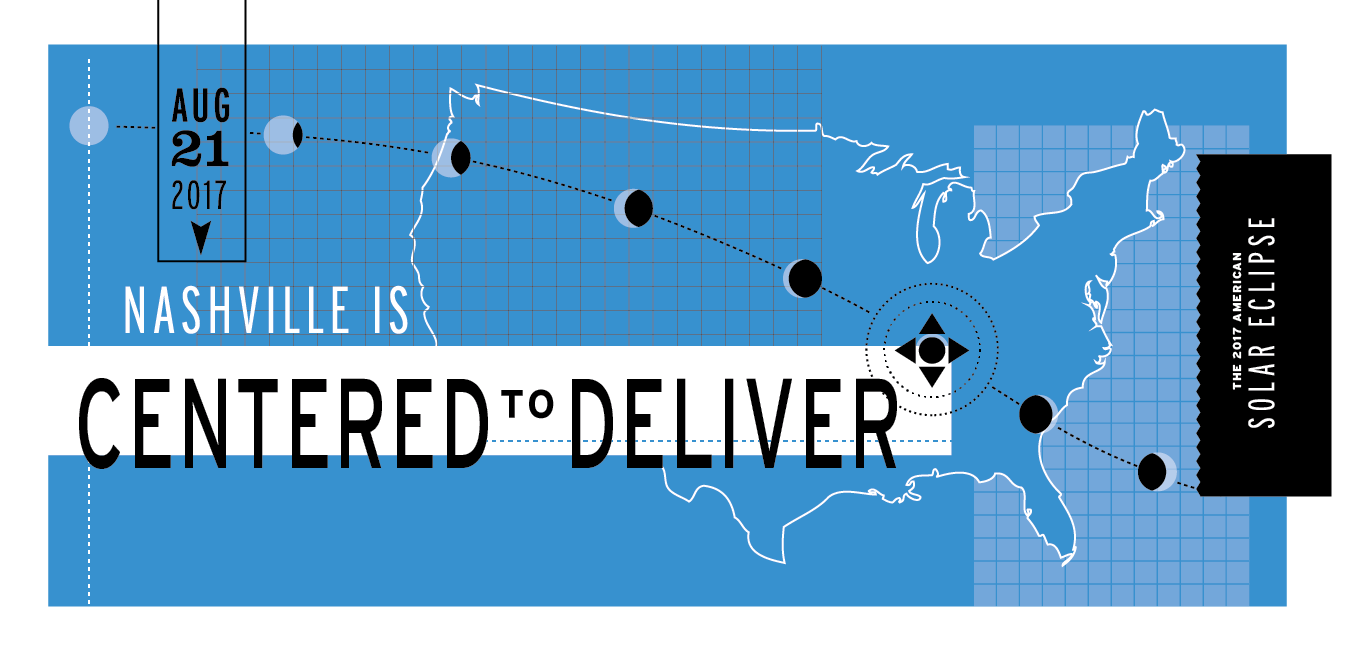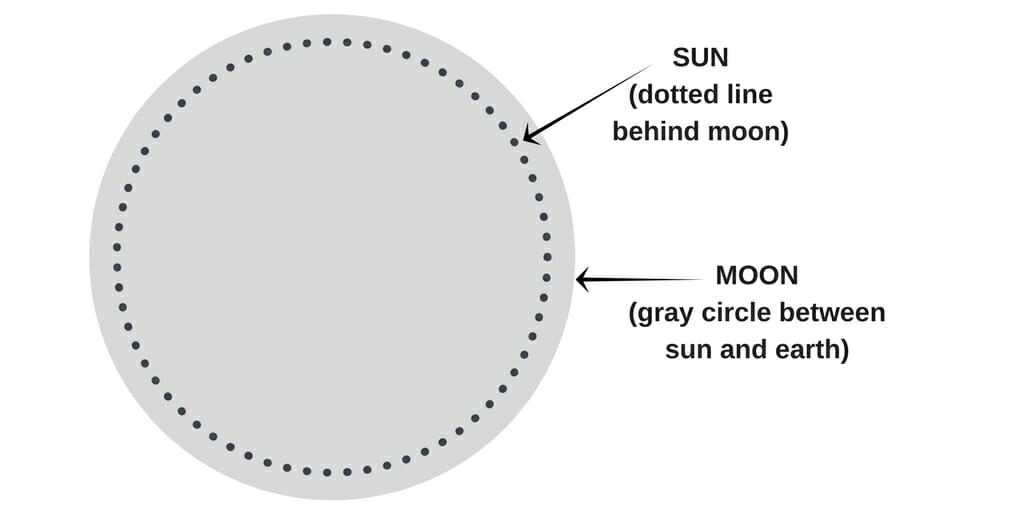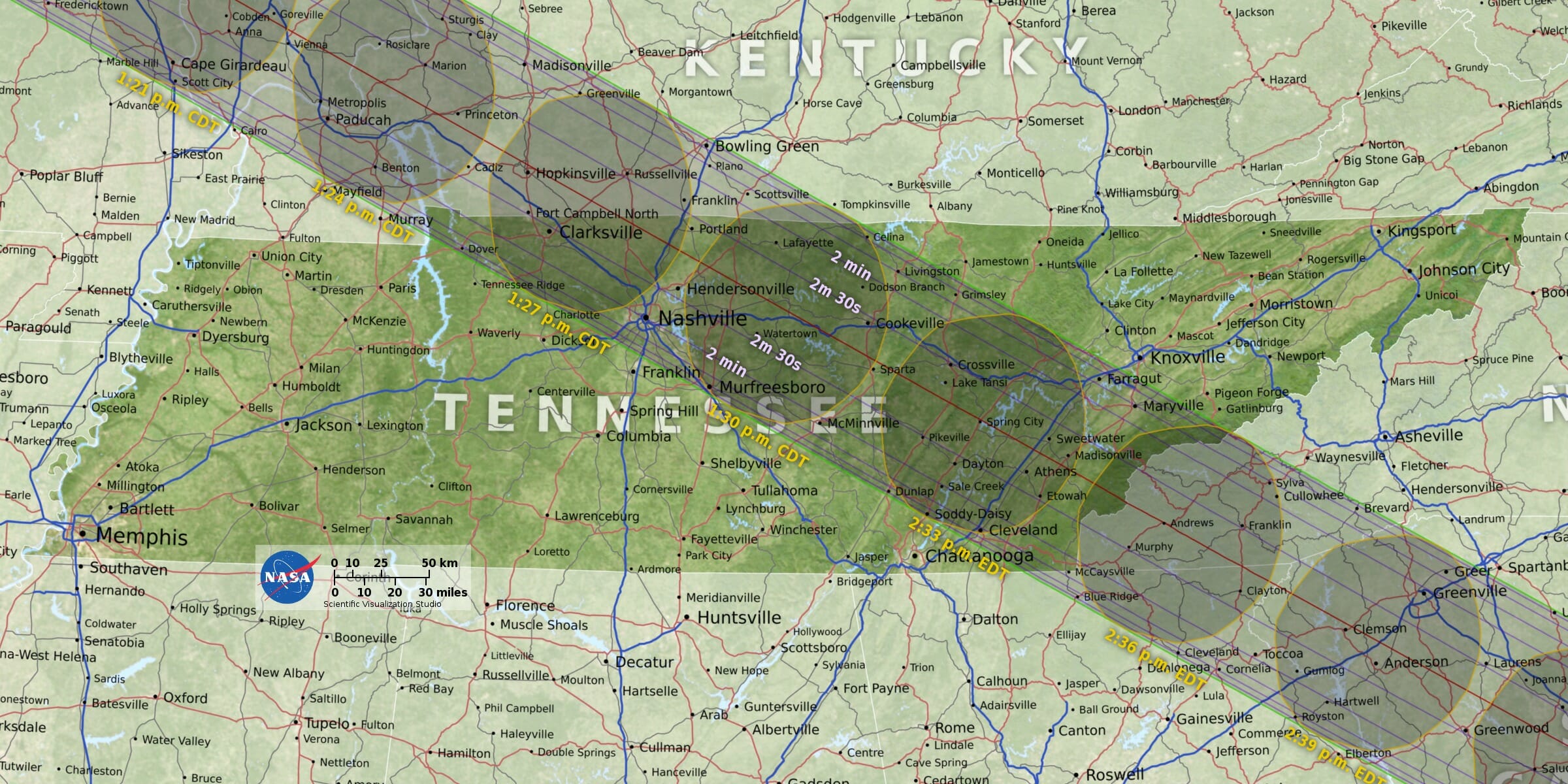
On August 21 this year, a total solar eclipse will be visible in the United States. The last time a total solar eclipse was visible in continental North America was in 1979 in Canada. Nashville will be the biggest city along the viewing path of the 2017 Total Solar Eclipse. Bass, Berry & Sims is excited to celebrate this rare event from our headquarters in Nashville.
During the next month check out this webpage and the Bass, Berry & Sims Twitter feed (@BassBerrySims) for updates. Mark Manner, Bass, Berry & Sims attorney and respected amateur astronomer, answers key questions and provides important insights on what to expect during this significant occasion.
What is a total eclipse?
Where is the eclipse visible?
Why use solar viewing glasses?
Why use solar viewing glasses?
Since it’s dangerous to look directly at the sun, use solar viewers leading up to and following the 2-minute total phase of the solar eclipse to filter out the sun’s damaging rays, including visible light, UV and infrared.
Since the surface of the sun will be totally obscured during the 2 minutes of the total eclipse phase, you must remove the glasses to view the delicate solar corona with the naked eye.
Do not use glasses if there are holes in the lens or with anything other than the naked eye. Specifically, do not use the glasses with binoculars, telescopes, spotting scopes or any other optical device.
Several retailers are selling solar glasses to enhance your viewing experience. A quick Google search will provide a list of online retailers.
Where is the total eclipse visible?
While most of the continental United States will be able to see a partial eclipse on August 21, an approximate 75-mile wide stretch from Oregon to South Carolina will be in the path of the total eclipse, including Nashville. If it is not cloudy, Nashville and the surrounding area will be able to witness this event for about 2 minutes (up to a bit over 2.5 minutes for those closer to the dead center of the eclipse path).
During the total eclipse, observers can expect the sky to darken to dusk level, the temperature to drop and the planets and stars to be visible to the naked eye. If the observer is positioned on a relatively high spot, a ring of daylight can be seen in the 75-mile diameter circle around them. The dark shadow of the moon can sometimes be seen approaching the observer from the west at over 1,000 miles per hour right before the total phase of the eclipse begins.
The map below, provided by NASA, shows the path throughout Tennessee. To look at the full viewing path in the United States, visit the NASA website.
August 21, 2017: Viewing times for Nashville [other locations along path will be different]
11:58 a.m. – first contact between moon and sun, partial eclipse begins
1:27 p.m. – total eclipse begins, moon completely covers sun
1:29 p.m. – total eclipse ends
2:54 p.m. – last contact between moon and sun, partial eclipse ends
What is a total eclipse?
During a total solar eclipse, the moon is positioned exactly between the earth and the sun and, for a short period of time, totally obscures the view of the sun’s surface for observers along a specific pathway across the globe.
While a total solar eclipse happens every year or two somewhere on earth, in most cases, the eclipse is of very short duration, over water, or visible from a location that is remote or cloudy. Partial solar eclipses are much more common, but since part of the surface of the sun is still exposed, filters must be used throughout the event and the delicate beauty of the sun’s outer atmosphere isn’t visible.
Bio of Mark Manner

Mark Manner has earned a national reputation both in his legal practice and as an experienced and avid astronomer.
Mark has been recognized by Chambers USA as an “excellent attorney” who “draws upon over 35 years of experience to skillfully handle M&A and private equity transactions, as well as provide in-depth advice on corporate governance matters.” (from Chambers USA 2016) He provides counsel to corporate boards, executives and significant shareholders on governance, securities issuances and disclosures, private equity transactions, and mergers and acquisitions. Mark joined Bass, Berry & Sims in 2016 after founding and serving as the managing shareholder at h3gm.
Mark’s lifelong passion with astronomy has provided him opportunities to work with NASA in its mission to Pluto, KELT (Kilodegree Extremely Little Telescope) in discovering distant exoplanets, and various academic institutions in setting up observatories around the country. He is listed as a co-author on several scientific papers reporting on the discovery of exoplanets, and has been fortunate to witness three previous total solar eclipses, in Canada (1979), Hawaii (1991) and Aruba (1998).
Mark has contributed content and research to several academic articles on astronomy, including the recent discovery of a new planet:
- “Astronomers Just Discovered a Huge Planet that’s hotter than Most Stars,” Digital Trends (June 6, 2017)
- “A Giant Planet Undergoing Extreme-ultraviolet Irradiation by its Hot Massive-star Host,” Nature (June 2016)
For more information about Mark’s astronomy passion and to view images he has taken of planets and the sun, visit his blog www.spotastro.com.



